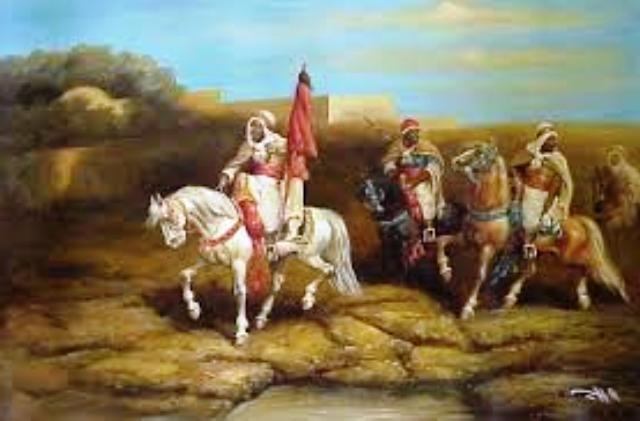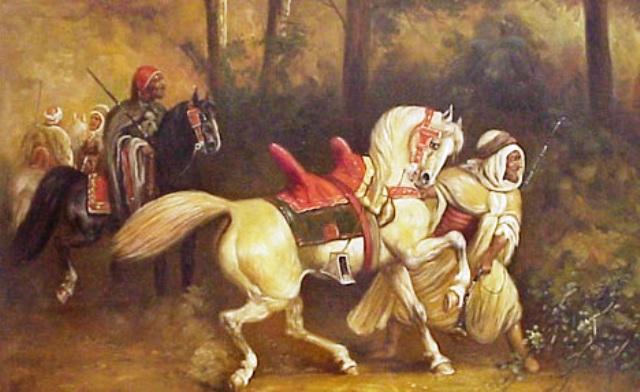
Abyssinian-Adal War
The Abyssinian-Adal war was between the Ethiopian Empire and the Adal Sultanate that lasted for 14 years (1529-1543).During this time, a Somali military leader named Imam Ahmad ibn Ibrahim al-Ghazi had been militarily victorious over several Ethiopian emperors and their armies.
Al-Ghazi would name this conquest the Futuh Al-Habash or the Conquest of Abyssinia.

Al-Ghazi, along with his predominantly Somali soldiers and their Ottoman allies would bring Christian Abyssinia to her knees by conquering over half of the country and putting it under the Muslim Sultanate of Adal.
Al-Ghazi's forces had entered Ethiopia from the low country to the southeast, and overran the kingdom, forcing the Emperor of Ethiopia Dawit II to take refuge in a mountain hideout.
The ancient Ethiopian kingdom's survival would be secured through the assistance of the Portuguese.
John Bermudez, a subordinate member of the Portuguese mission of 1520 in Abyssinia would send a message for help against the Somalis and the Ottomans.
In response, Portugal would send a fleet under the overall command of Admiral Estevao Da Gama from India.
The fleet arrived in the port of Massawa in 1541, and here the Estevao would receive an ambassador from an Ethiopian delegation pleading for him to send help against the Muslim invaders.
Before the arrival of the Portuguese forces, there were several battles between Al-Ghazi's soldiers and the Abyssinians.
In 1529, at the Battle of Shimbra Kure, Al-Ghazi would lay waste to a larger Ethiopian force, providing the Somali's with much needed morale.

By 1531, victory after victory would solidify Al-Ghazi's position of dominance in Abyssinia.
The first encounter of the year would be the Battle of Antukyah, had the Ethiopian forces panic when they heard the canon fire at the start of hostilities.
The second encounter would be on October 28, 1531, at the Battle of Amba Sel, when troops under Al-Ghazi not only overwhelmed but dispersed the Abyssinian army and captured items of the Imperial regalia.

image credit: wikipedia.org
Following the Adal's victories of 1531, the Somalis would enter the Abyssinian Highlands and begin to destroy and loot a number of Christian churches, including the important Atronsa Maryam Church which housed the tombs of several Abyssinian Emperors.
One year before the arrival of the Portuguese forces, Emperor Dawit II would die in 1540 and his heir would subsequently be captured by the forces of Al-Ghazi.
The Empress on the other hand would be unable to react as she was besieged in the capital.
A short 5 months after their arrival in Massawa, Cristovao Da Gama, the younger brother of Admiral Estevao Da Gama, would lead a force of 400 musketeers into the interior of Abyssinia.

Initially, along with local Ethiopian forces they would be successful against the Adals, but they would soon be defeated in 1542 at the Battle of Wofla.
At this battle, Cristovao Da Gama would be captured and later executed.
By 1543, Al-Ghazi, the commander of the Somali armies would be killed and his army destroyed by the Ethiopian guerrillas and the surviving Portuguese musketeers, in the Battle of Wayna Daga.

This force would go on to initiate a surprise ambush against a second army belonging to Al-Ghazi's military leaders.
With these victories, the tide of the war would shift and the surviving Somalis of Adal would be forced to withdraw from Abyssinia.
This war would severely deplete both countries of resources and manpower, leaving them weakened considerably, leading to the migration of the Oromo people from the lands to the south of the Abay to the east in Harar.
The Adal-Abyssinia war is believed by many to have caused an underlying tension between the nations of Somalia and Ethiopia to this day.
